MPavilion 1
Australia, Melbourne
completed
in 2014
The Australian landscape presents a complex interplay of innate brutality and introduced refinement. Early colonial interventions sought to ‘civilize’ an environment that could be unforgiving, where unfamiliar botanical species posed threats and every natural bite or sting could prove lethal. This ancient Indigenous landscape, with its sunburnt beauty, leaves a lasting imprint on the hearts and minds of Australians—it becomes an inseparable part of our identity. Any man-made structure within the outback symbolizes shelter, respite, and even salvation, underscoring a tradition of building that adapts to the harsh realities of this land.
In contrast, the urban landscape of cities like Melbourne offers a different kind of beauty—one of shade, autumnal color, and soothing lushness that tempers the relentless dryness of the Australian climate. Melbourne’s gardens provide a verdant balance to the density of the city, nurturing it within an enveloping green embrace that offers comfort and solace to all. Here, gardens become communal spaces, accessible to locals and tourists alike without exclusionary signs or barriers. The ring of greenery formed by Flagstaff, Treasury, Fitzroy, and the Royal Botanic Gardens—including the Queen Victoria Gardens, situated just across St Kilda Road from the National Gallery of Victoria—creates an inviting thoroughfare for those journeying to the CBD, Fed Square, the MCG, Melbourne Park, and the Sidney Myer Music Bowl.
The purpose of MPavilion is to create a welcoming space for recitals, presentations, lectures, readings, and performances throughout the summer months. It draws inspiration from the hay sheds, barns, shearers’ sheds, and verandas that serve as meeting places and community centers in the Australian outback. These simple structures become powerful gathering points for weddings, meetings about pressing droughts, or the reality of inevitable fires.
MPavilion 1 itself is a straightforward 12m x 12m steel structure, featuring a glazed roof and an automated outer skin that filters the harsh Australian sun while providing much-needed shade and shelter. Its design evokes the iconic silhouettes of distant hills and far horizons found in the Australian interior, creating an architectural dialogue that connects the pavilion to the broader landscape and its enduring spirit.
In contrast, the urban landscape of cities like Melbourne offers a different kind of beauty—one of shade, autumnal color, and soothing lushness that tempers the relentless dryness of the Australian climate. Melbourne’s gardens provide a verdant balance to the density of the city, nurturing it within an enveloping green embrace that offers comfort and solace to all. Here, gardens become communal spaces, accessible to locals and tourists alike without exclusionary signs or barriers. The ring of greenery formed by Flagstaff, Treasury, Fitzroy, and the Royal Botanic Gardens—including the Queen Victoria Gardens, situated just across St Kilda Road from the National Gallery of Victoria—creates an inviting thoroughfare for those journeying to the CBD, Fed Square, the MCG, Melbourne Park, and the Sidney Myer Music Bowl.
The purpose of MPavilion is to create a welcoming space for recitals, presentations, lectures, readings, and performances throughout the summer months. It draws inspiration from the hay sheds, barns, shearers’ sheds, and verandas that serve as meeting places and community centers in the Australian outback. These simple structures become powerful gathering points for weddings, meetings about pressing droughts, or the reality of inevitable fires.
MPavilion 1 itself is a straightforward 12m x 12m steel structure, featuring a glazed roof and an automated outer skin that filters the harsh Australian sun while providing much-needed shade and shelter. Its design evokes the iconic silhouettes of distant hills and far horizons found in the Australian interior, creating an architectural dialogue that connects the pavilion to the broader landscape and its enduring spirit.
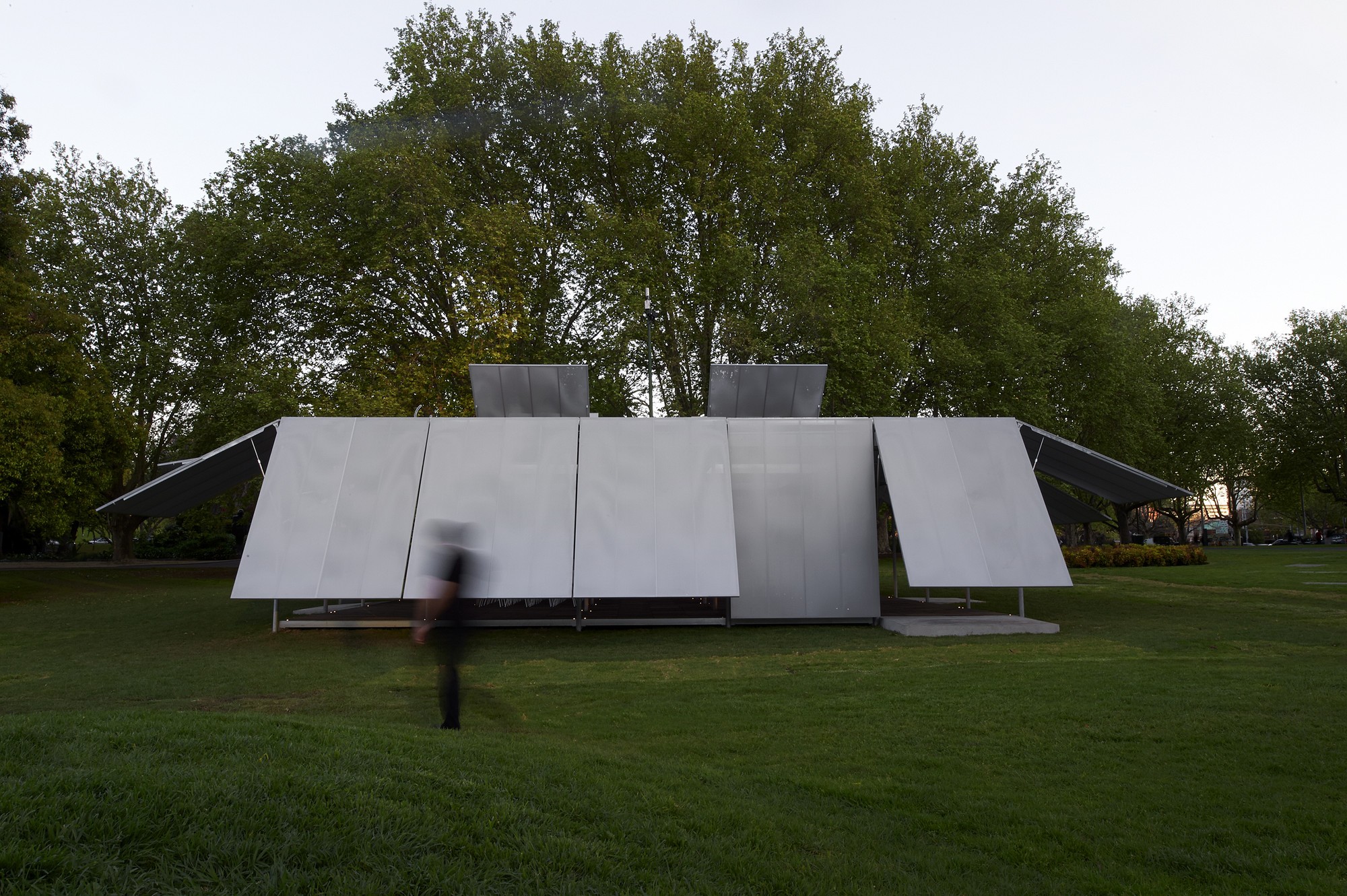
©
Earl Carter
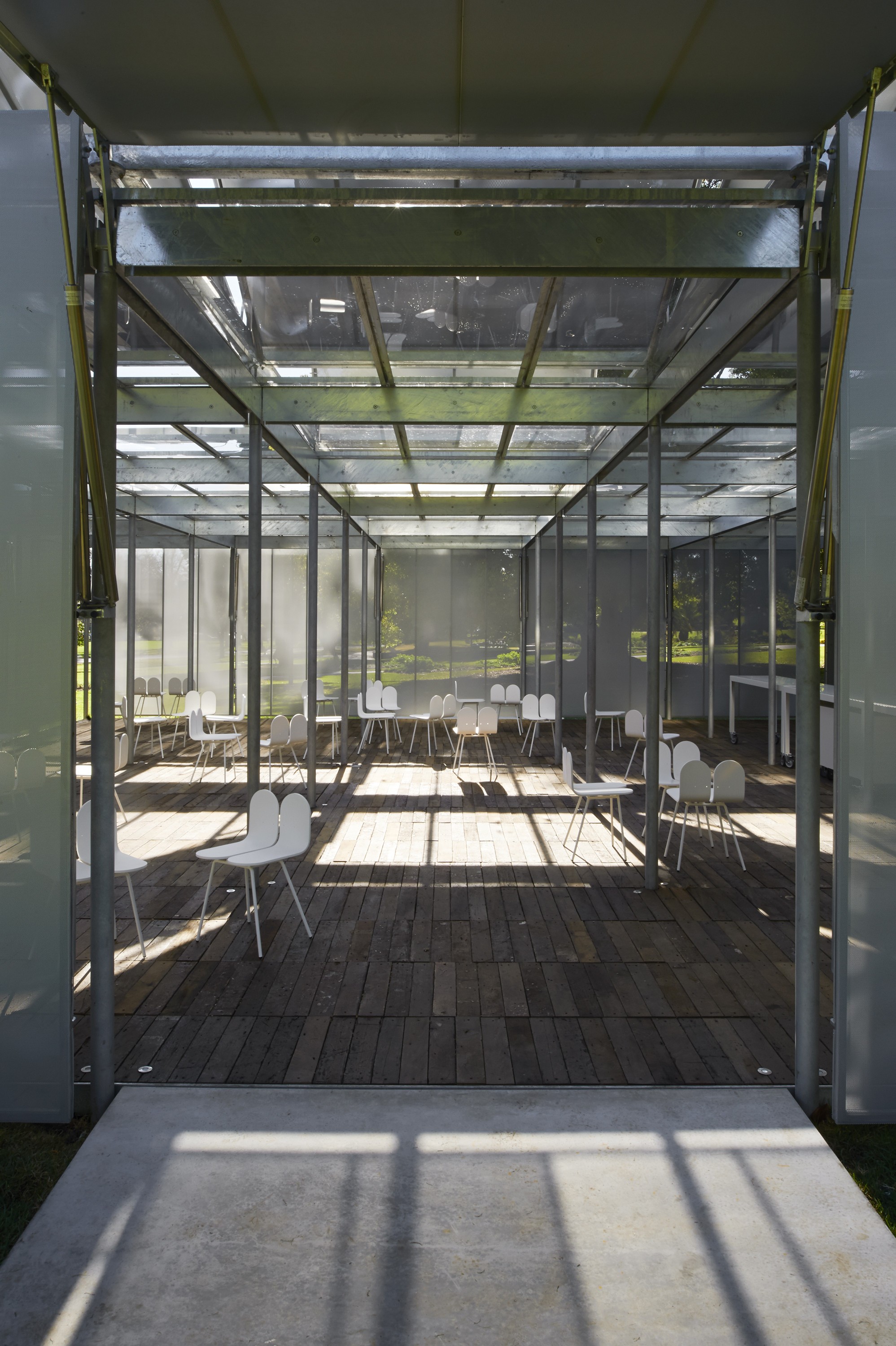
©
Earl Carter
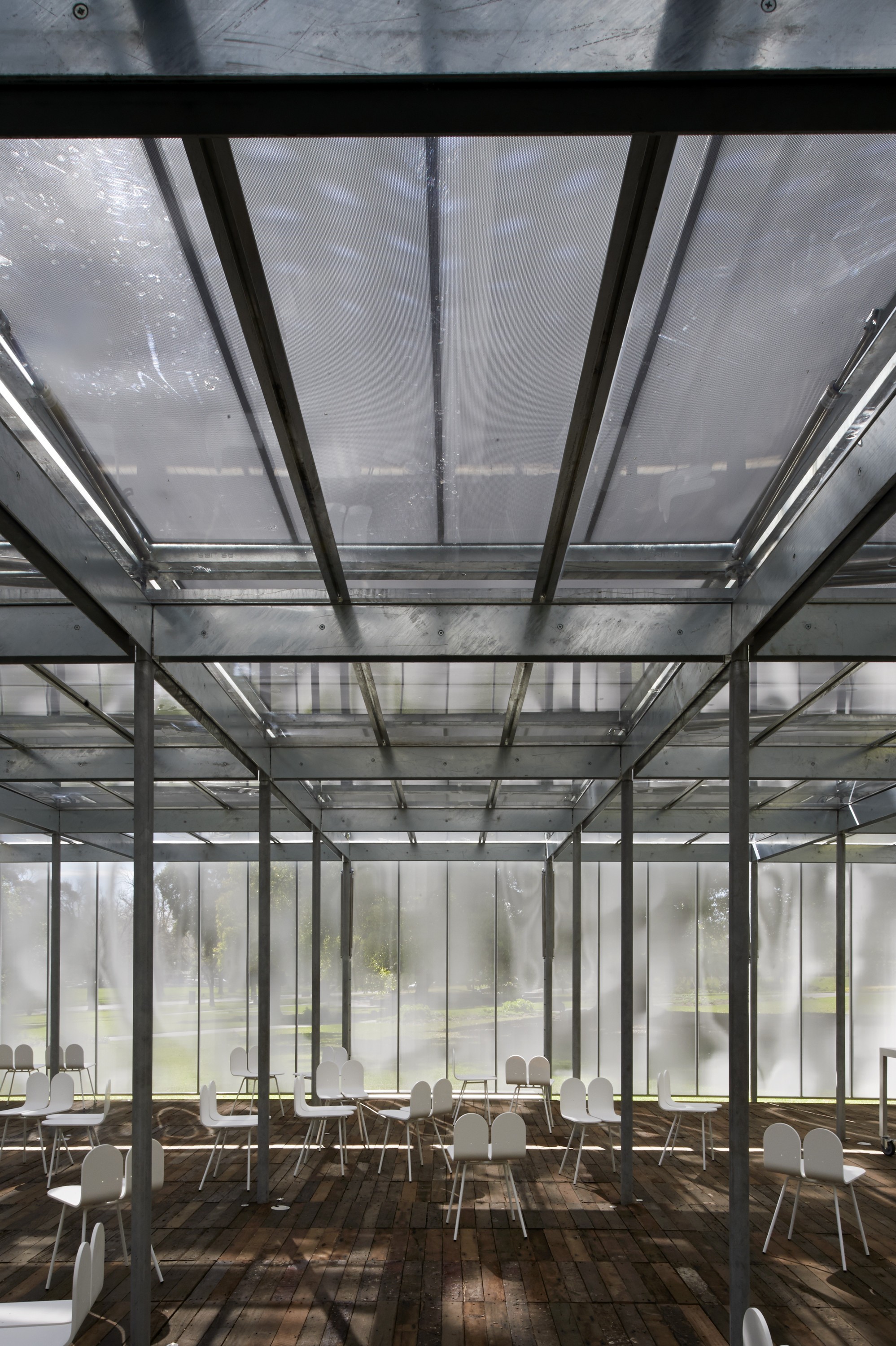
©
Earl Carter

©
Earl Carter

©
Earl Carter

©
Earl Carter

©
Earl Carter
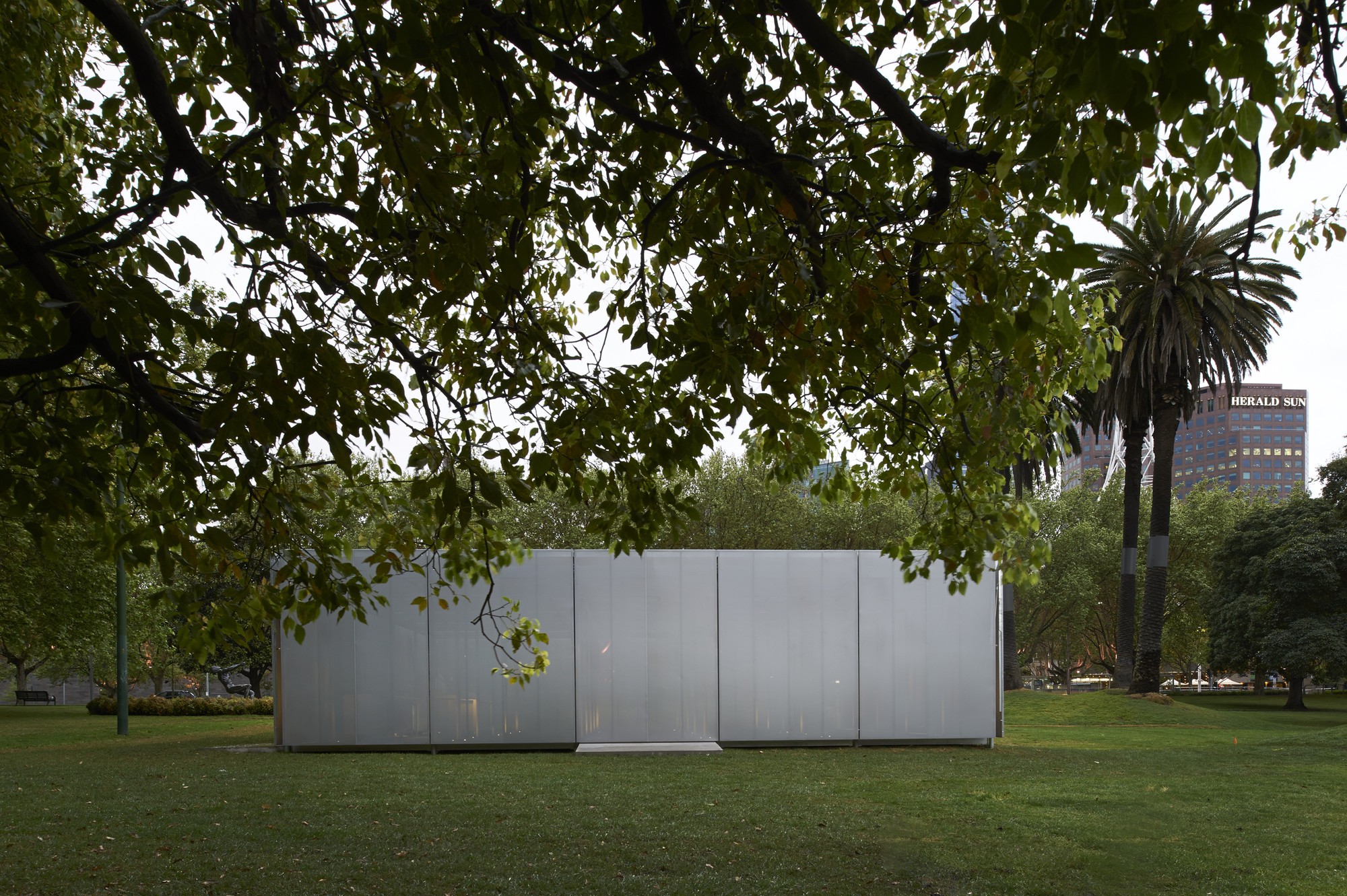
©
Earl Carter

©
Earl Carter

©
Earl Carter
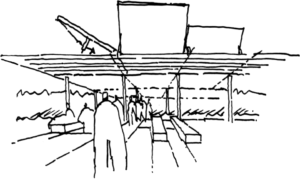
©
Earl Carter
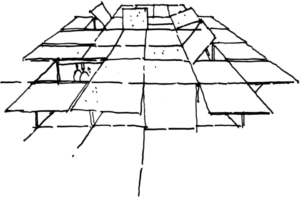
©
Earl Carter
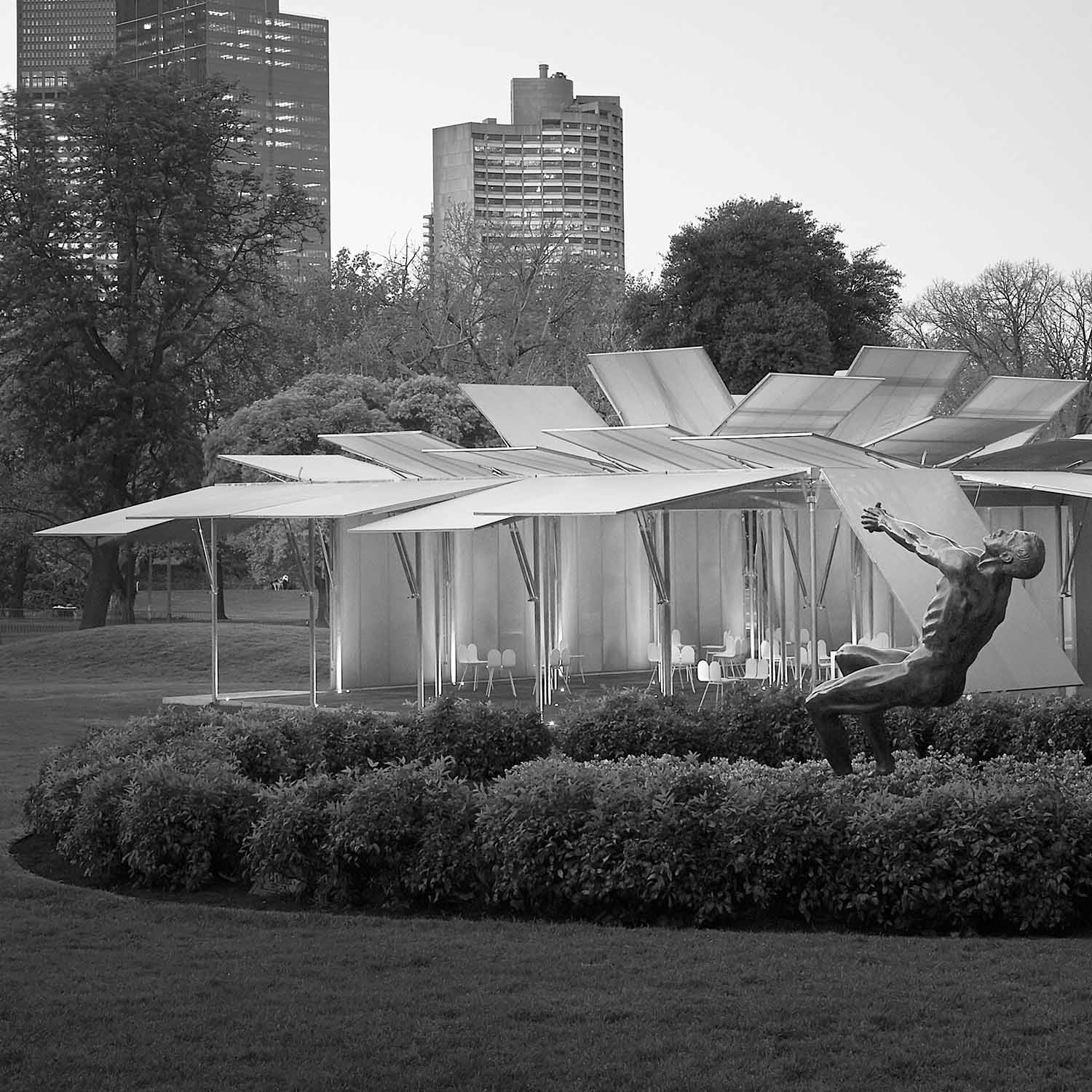
Comments
(0)